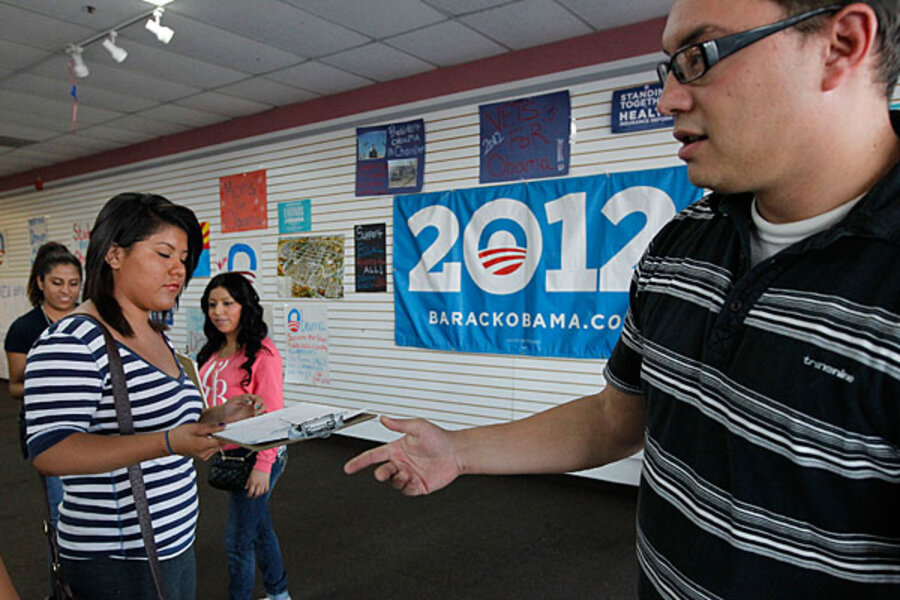Minority voters make up a lower percentage of the electorate than they do the entire US population.
Of eligible voters, 71 percent are white, 12 percent black, 11 percent Hispanic, 4 percent Asian, and 2 percent other.
Of the total US population, 63 percent are white, 17 percent Hispanic, 12 percent black, 5 percent Asian, and 3 percent other, according to an analysis of US Census Bureau data by William Frey, a demographer and senior fellow at the Brookings Institution.
The reason for the difference? Minority populations, which are growing at a faster rate than that of whites, include more young people who have not yet reached voting age, writes Dr. Frey in his analysis for Brookings.
He found that 78 percent of whites are eligible to vote, compared to 69 percent of blacks, 53 percent of Asians, and 44 percent of Hispanics.








